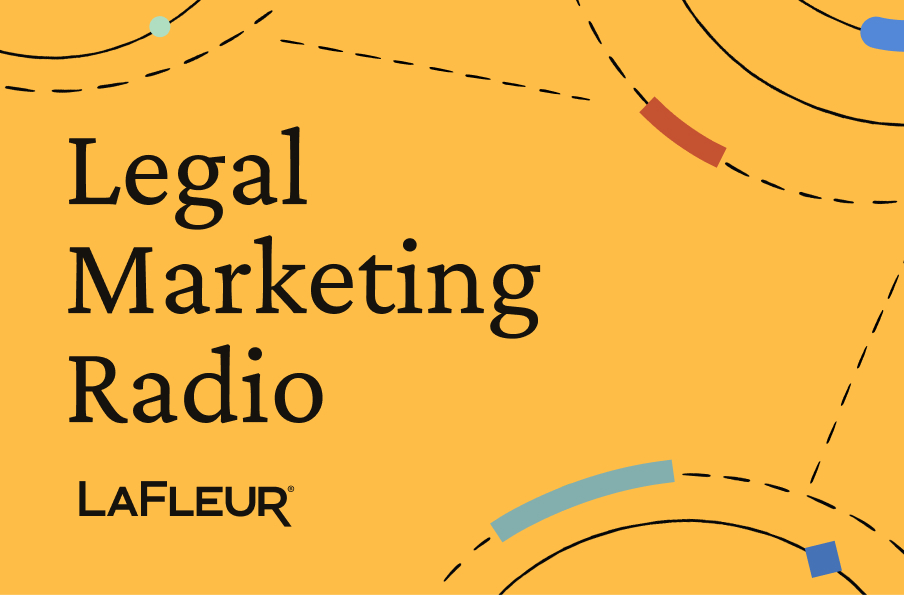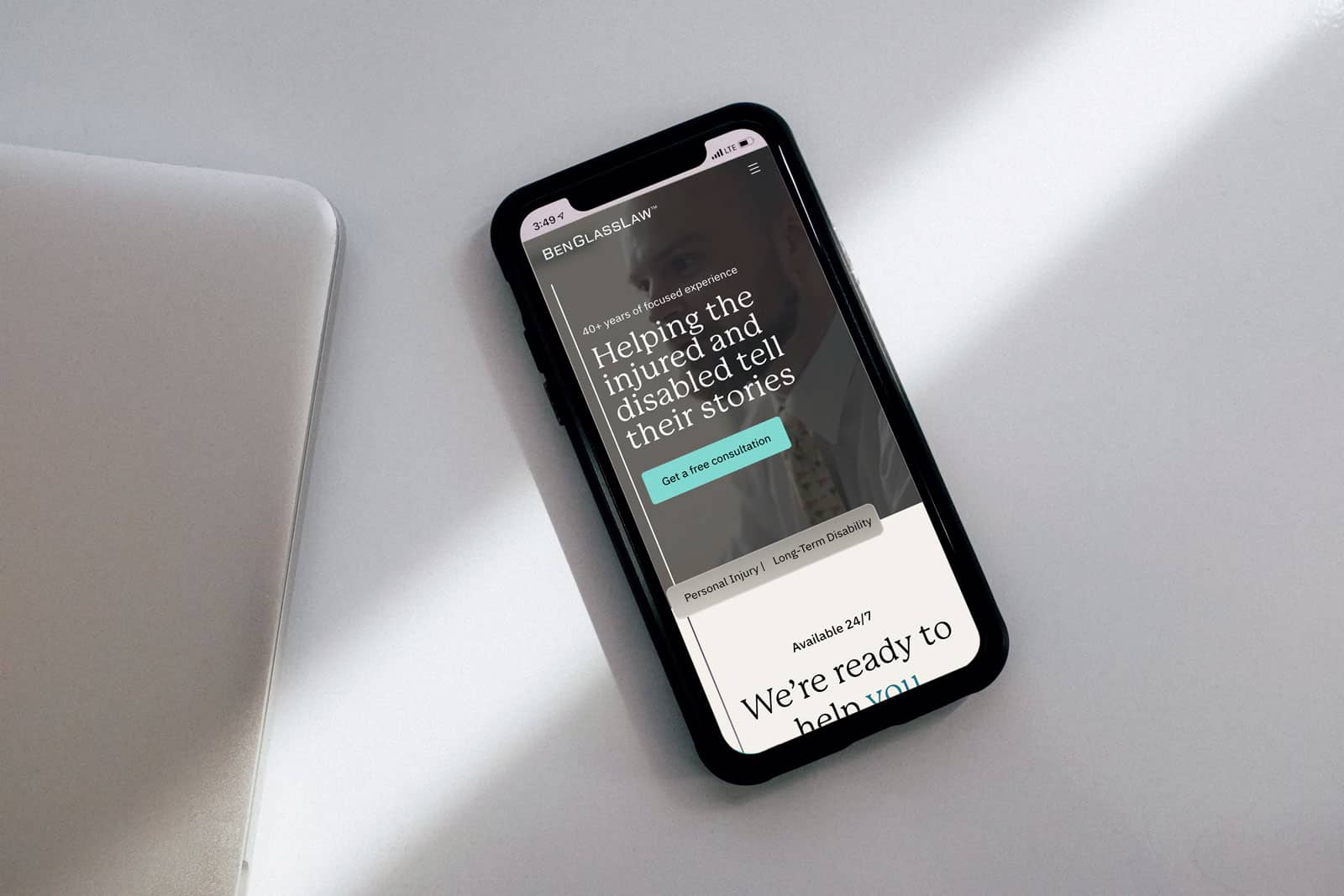Jump to:
• The basics of marketing strategy
• Your strategies should be human-centered
• Data, when used wisely, bolsters the human experience
The marketing industry sells you tactics, but you deserve insights and strategy.
The marketing world is evolving rapidly. A year ago, we were just starting to talk about ChatGPT and the Helpful Content System; SGE, BingChat, and Google Perspectives were just glimmers on the horizon. Today, these are picking up momentum and are (or should be) starting to affect everything we digital marketers do. (We’ve been closely monitoring these for a while now).
However, if you talk to many marketers (especially big-box legal marketers), they still talk about standalone solutions like SEO. Let’s keep it real. SEO is a tactic, a means to an end. And organic search will continue to evolve over the next few years.
I founded LaFleur as a response to the typical agency where tradition and status quo reign supreme. Our team follows marketing trends and drives change, and we’re excited about where marketing is headed.
The basics of marketing strategy
A lot of people confuse marketing strategy and tactics. While the two concepts are complementary, strategy is what will set your firm apart.
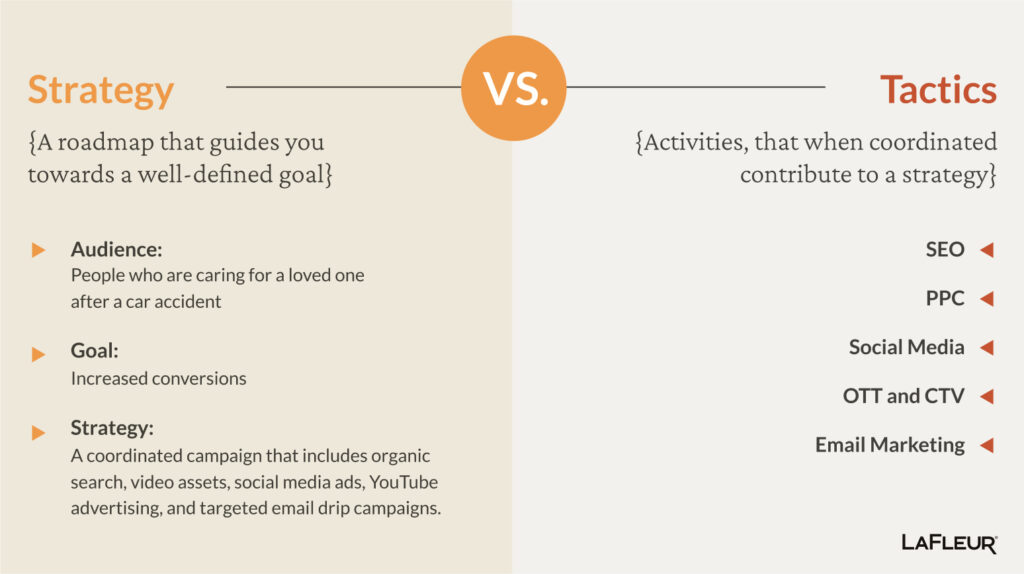
Let’s dig into this in a little more detail. Suppose your personal injury law firm realizes that some of its best leads are people caring for a loved one after an injury. However, your conversion rate for this audience is relatively low. You want to turn more of these valuable leads into clients.
So far, you’ve articulated an insight and a goal. Now you need to build a strategy.
Strategy is a roadmap to success
To achieve your goal of converting more caregivers into clients, you’ll need a roadmap. So, you audit your content and realize you rarely address caregivers’ needs or concerns. And your competitors also rarely address this group.
Your strategy might be to build a campaign that addresses these gaps and targets this often-ignored audience. You do keyword and audience research to identify popular topics, like advice for those living with a brain injury survivor. You also identify social media hashtags, podcasts, and other platforms that interest caregivers. Then, you map out a journey that will help bring your brand to the forefront.
This journey is becoming less monolithic too. Today, people get their information from countless sources: social media posts, online videos, word of mouth (including online social proof), podcasts, and content on the open web. What used to work—a plan that focused heavily on organic search—might not be as effective in the future. Your strategy needs to evolve, becoming more creative and more omnichannel.
Tactics turn your strategy into reality
Your omnichannel roadmap might include paid advertising, organic social media posts, landing pages, long-form and search-optimized content, short-form video, and an email drip campaign. Your tactics should specifically target caregivers, weaving in client success stories, practical advice, and brand awareness content.
And this content should work in concert to reach your goal—convert leads into clients. Imagine how much more effective this campaign would be than a single blog that targets the keyword “attendant care services.”
Your strategies should be human-centered
You might have noticed that my sample roadmap started by considering both your firm’s and your audiences’ needs.
- We identified a missed opportunity in your marketing plan.
- Then, we dug into that audience’s real needs—looking for topics and narratives that would offer real value to the audience.
- Finally, we built a roadmap to share your expertise on platforms the audience values and where they consume information.
We didn’t dig into keywords simply to find the highest monthly search volumes and lowest keyword difficulty—we wanted to understand our audience and meet them where they are. Then, we found messages (not necessarily keywords) that would speak to them. And we dug into their consumer behavior—where are they looking for information? Who do they consider a trusted source? What issues are they passionate about?
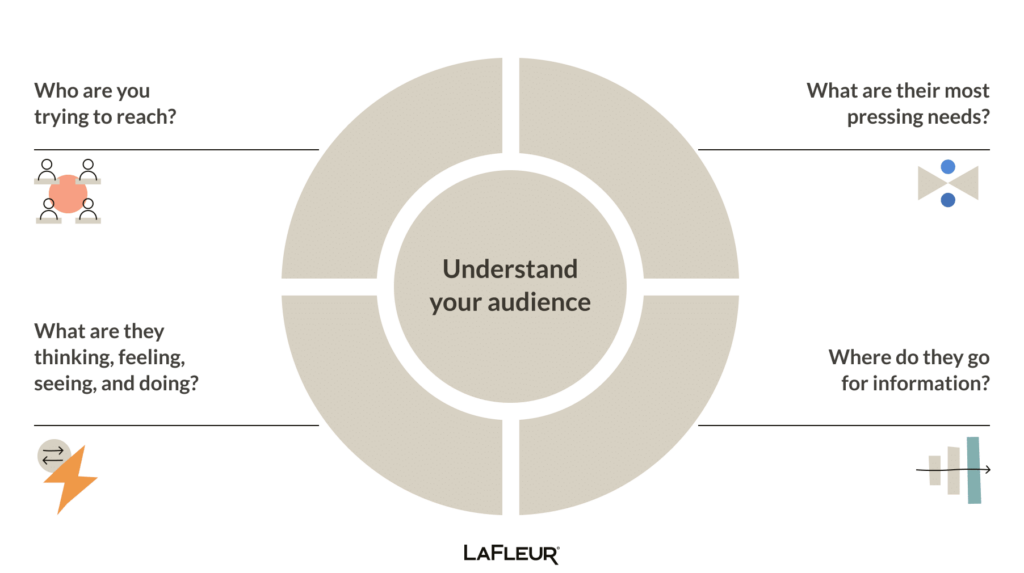
This also aligns with where Google is headed. Google’s Helpful Content System prioritizes content that answers people’s questions with plain language and practical information. It’s time to stop keyword stuffing. Google discourages content that is purely written to please the algorithms.
And simply building a strategy around ranking on Google isn’t enough. As we noted before, people consume information on various platforms. Your strategy should be omnichannel and data-informed.
RELATED: The Art of Writing human-centered Content with Eric Ganci
Data, when used wisely, bolsters the human experience
Data has an unfair reputation for being cold and clinical. The reality is that data helps you connect with people and make better business decisions. Your analytics data tells you stories:
- How your clients’ find and interact with your brand
- What your audience wants to read about—and where they want to see them (helping you build that omnichannel strategy)
- What types of messaging resonate with people
- Which audience segments are under-represented in your and your competitors’ content
- What your competitors are getting right—and what they’re getting wrong
- How long it takes, on average, to acquire a client
- Where you’re overinvesting and underinvesting
But how do you get that kind of human-centered insight out of data? People.
When data scientists, analysts, and storytellers work together, they take vast amounts of information and turn them into something meaningful and actionable.
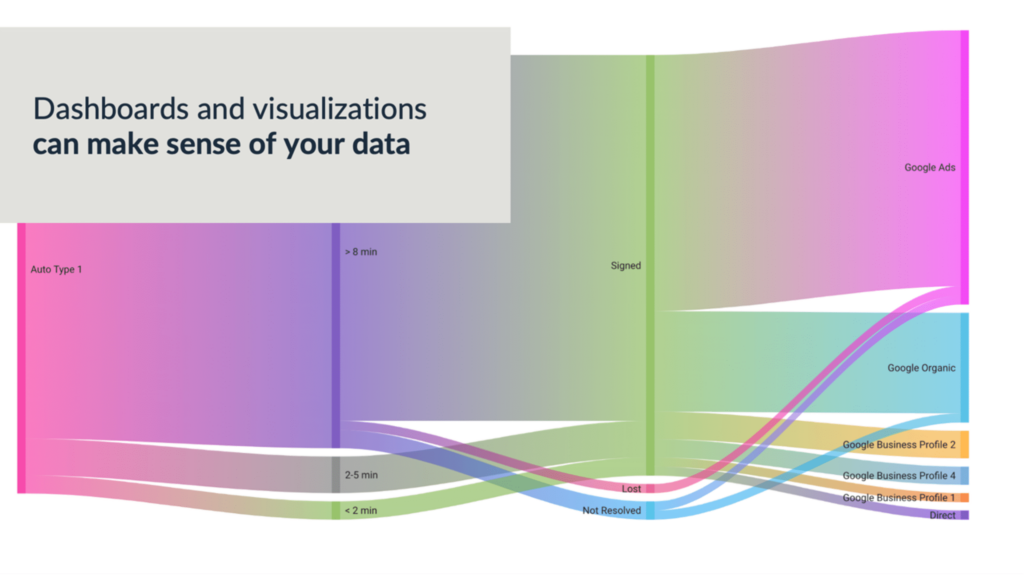
Our team takes data from disparate sources to build dashboards, visualizations, and sensemaking narratives to help our clients. But more importantly, we use data to derive human-centered insights that help them reach their goals.
To make sense of your data, you first have to track it. Ensure you’re tracking after Google switched to GA4, their updated analytics platform.
RELATED: How to make the most of your data in a post-Google Universal Analytics world
For example, suppose that you assess your conversion-driven strategy for caregivers after three months. You discover that a series of Google PPC ads targeting TBI caregiver-related keywords are pulling in significantly larger conversions than other tactics, like programmatic display ads. You might want to reallocate your budget to get the most out of those high-performing ads. Or you might want to assess the top-performing ads’ narratives and incorporate them on under-performing platforms.
LaFleur: Leveraging people and data to achieve your marketing goals
I think the days of investing in just SEO or PPC are coming to a close. If you want your firm to thrive, you have to build comprehensive, data-driven strategies that help you connect with people and maximize your budget. This will make you more agile—and more likely to survive in our increasingly competitive world.
If you were at Advocacy 360’s Las Vegas conference, some of this might seem familiar – it’s an adaptation of my presentation.
If you’d like the slides from that presentation, which include information about understanding your audience and marketing SWOT analyses, download them here.
Finally, you can always contact me on LinkedIn or by emailing me at [email protected].


